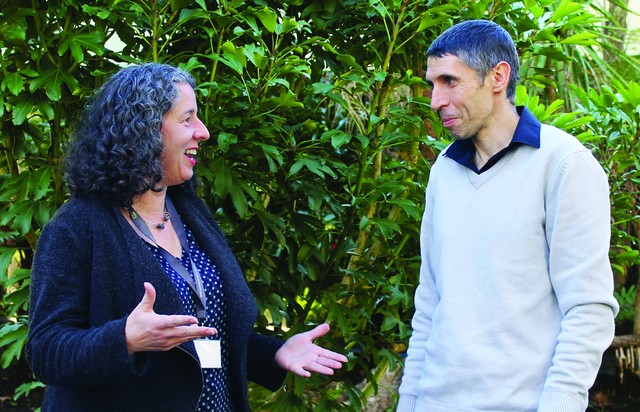Forest genetics and tissue culture programmes accelerate change

There is a huge potential for improvements in radiata pine genetics and breeding technologies to create benefits for the entire forestry industry.
Our vision is to enable high-quality plants to be delivered to the forest faster. This will mean achieving the best genetic gains possible in the forest and disrupting the standard process of growing trees from seed to significantly increase forest productivity.
With these aims in mind, our forest genetics and tissue culture scientists have formed a new partnership with the Radiata Pine Breeding Company (RPBC) and embarked on a new research programme with Forest Growers Research. Scion has also appointed a new research leader to help bring about this transformational change.
Tree improvement moves into a new phase
Scion and RPBC have forged a new relationship to work together to deliver improved tree genetics for radiata pine growers. Optimisation and integration of genomics technologies into the breeding programme will be the key focus of this stronger relationship.
Genomics involves understanding the ancestral relationships, or family relationships among trees, likened to ancestry.com for trees. It also involves understanding the relationship between a large number of DNA markers and tree characteristics. By learning more about these marker relationships, we can predict the best trees to accelerate breeding, prevent the negative consequences of inbreeding, and inform forest conservation programmes. Genomics is also expected to cut the breeding cycle time by up to 50 per cent, substantially reducing or perhaps even eliminating field testing.
RPBC supplies genetic material to the majority of forest growers in New Zealand, as well as up to 30 per cent of Australia’s radiata pine-growing industry. By working in partnership with the RPBC, the effects of increased tree quality and decreased breeding time will be realised quickly and on a wide scale.
Introducing Gancho Slavov
Dr Gancho Slavov will be one of the scientists helping to make this research happen. Gancho joined Scion in May 2019 as a Research Leader for Quantitative and Molecular Genetics.
His experience is in population and quantitative genetics and genomics of species including mugo pine, Douglas-fir, poplar, willow and miscanthus. Gancho’s key interests are in developing predictive genomic models from phenotyping data, and in accelerating and improving breeding/conservation programmes to mitigate climate change.
This role brings together and applies all of Gancho’s expertise. He says, “Radiata pine is a fascinating species, and there is potential for genomics to make big improvements in the forestry industry. The genomic prediction approaches that I’ll be working on could also be applied to accelerate breeding and conservation programmes for other exotic, and hopefully some indigenous, tree species”.
Tissue culture plant propagation
When it comes to introducing genetic improvements into forestry stock, tissue culture could be a speedier option.
Tissue culture is the growing of plants in a nutritious medium in the laboratory. Tissue culture has many advantages such as producing multiple plants from a single, immature seed. This process could be improved to increase the quality and multiplication of individual varieties of tree.
Scion is working closely with Forest Growers Research on their new tissue culture propagation partnership ‘Tissue Culture for the 21st Century’. The seven-year programme supported by the Forest Growers Levy Trust and MBIE, aims to produce a reliable and cost-effective tissue culture process by using bioreactors to quickly produce small rooted plantlets. Their work will make dramatic improvements in the delivery of genetic gain and future biotechnology developments into tree stock.
Transformative change
Scion’s Science Leader for Forest Genetics, Dr Heidi Dungey, says her team’s overall strategy is to be able to identify and breed trees with any desired trait. For example, tools can be developed and used for selecting trees that accentuate carbon sequestration to aid the mitigation of climate change and to establish a more sustainable biobased economy. Once selected, we need to be able to mass produce them as required and deploy into the forest as fast as possible Heidi says. “We want to create resilient forests that become a ‘supermarket’ for an array of different biobased products.”
